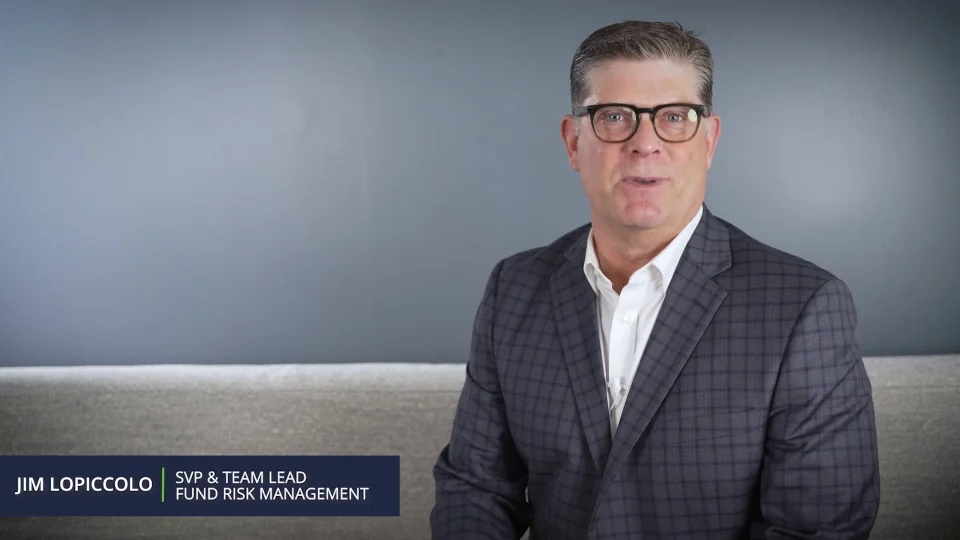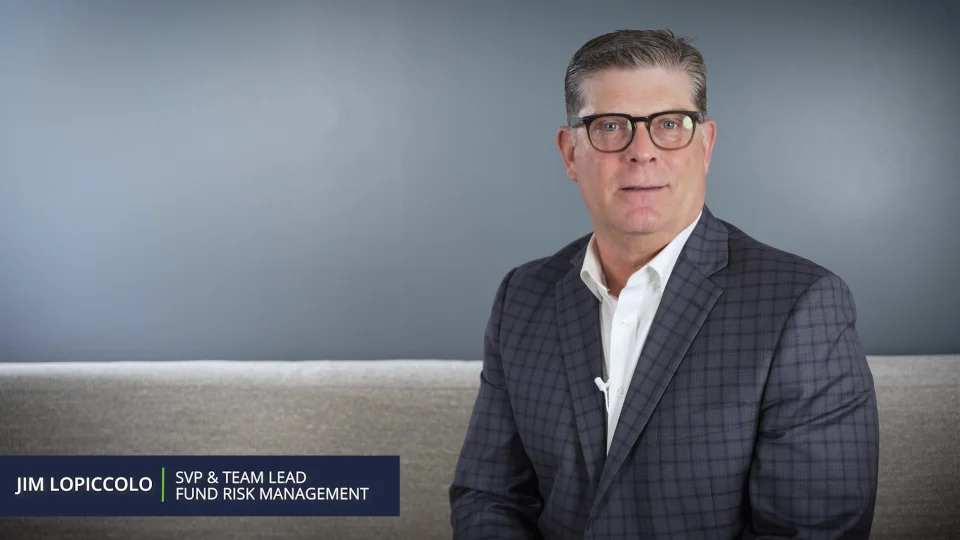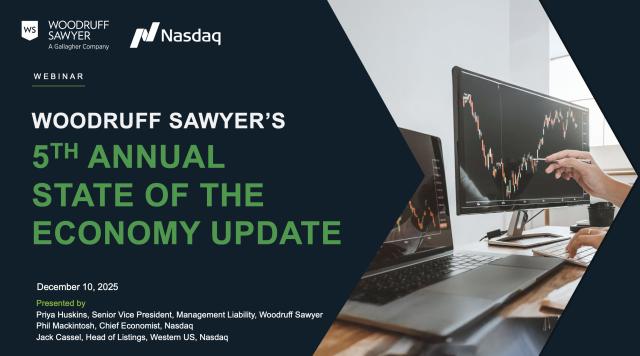Blog
Private Alternative Funds: How to Handle the Risks and Avoid Unnecessary Headaches
As specialists in real estate and alternative investments, we understand the risks that come with running a private alternative fund. When it comes to alternative investment strategies—like venture capital, private equity, real estate, and hedge funds—even the most seasoned fund managers have questions about how to protect their personal assets and the assets of the funds they manage.
We put together a three-part video series that delves into our clients' most common questions and concerns. This article summarizes our tips and advice regarding the following topics:
- Sources of litigation and protection
- Investment management liability insurance and what it covers
- Determining coverage amounts, minimizing premiums, and allocating premium expense
Sources of Litigation and the Primary Sources of Protection
Our first video examines how private fund managers can protect themselves from the threat of litigation. Investors pursue alternative investment strategies to generate above-market returns for their constituents. These often come with additional stakeholders, which, unfortunately, increases your risk of being sued—especially if your investments are in higher-risk strategies like digital assets or distressed debt.
Lawsuits can arise from a variety of sources—the most common of which are SEC investigations, investors claiming poor investment returns, or losses stemming from trade errors.
Some lawsuits come from unexpected sources, however. For instance, some of our short-seller clients have been sued for libel and slander by the public-company subjects of research papers they distributed. And some of the most significant claims against private-fund managers have come from risks unrelated to investment activities, such as employment matters. These suits can get emotional, dragging on for years and costing millions in legal fees. In fact, one of our clients recently spent $8 million to defend themselves in a complex employment case.
So, protection strategies are essential. We urge our clients to have indemnification terms written broadly into their agreements and to have the appropriate insurance coverage to fund that indemnification. Both need to be carefully drafted since plaintiff attorneys can be very creative in their legal approaches.
Let’s now take a deeper dive into insurance.
Investment Management Liability Insurance: What It Covers and How It Protects You
Investment management liability insurance pays on behalf of the fund its indemnification obligations to the manager and its partners, directors, officers, and employees. It also protects the personal assets of the individuals in instances when indemnification isn't available. Here are the six parts of this valuable coverage we describe in the second video of our series.
- Investment advisor directors & officers (D&O) insurance covers you for claims related to the management of the business, such as claims by shareholders of the advisor, competitors, and regulatory/governmental agencies like the Securities & Exchange Commission (SEC) and other third parties.
- Investment advisor errors & omissions (E&O) insurance covers claims arising out of investment advisory and other services provided by the management company and advisor to the funds, separate managed accounts, and other third-party clients.
- Investment fund D&O/E&O insurance covers claims against the directors and officers of the fund, the general partner or managing member of the fund, or the fund itself arising out of the operation and management of a fund, including capital raising, financial and economic advice, portfolio and asset management services, and selection and oversight of outside service providers to the fund.
- Employment practices liability insurance covers you for claims alleging wrongful employment practices like sexual harassment, discrimination, and wrongful termination by the management company or its employees.
- ERISA fiduciary liability covers you for claims involving the creation, administration, operation, or termination of an employee benefit plan sponsored by the management company.
- Outside directorship liability covers you for claims alleging a wrongful act in your capacity as a director, officer, partner, board representative, or managing member of a portfolio company or other outside entity.
A standard “off the shelf” policy typically won’t provide sufficient protection, since they’re written in a generic way to address most of the basic legal structures an investment manager may use or services they may perform. Any structures or services unique to the manager would need to be specifically negotiated. For example, one of our clients provides fund administration services to other unrelated third-party managers. What’s more, the language in standard policies is written by the carrier in favor of the carrier—as one would expect.
For the best protection, work with an expert who takes the time to understand your firm, its structure and funds, and the investment strategies you use today and might use tomorrow. Policies are highly negotiable and can be modified to maximize the probability that they will perform when you need them.
Coverage Limits, Premiums, and Premium Allocation
Our third video examines how to think about how much coverage you need, ways to minimize premium, and the methodologies used to allocate premium between the fund and the manager/advisor.
The amount of insurance coverage you buy is called the limit. If you buy, let’s say, a $5 million limit, your insurance will cover a claim up to $5 million. You’ll have to pay a retention, which is like a deductible, but the dollar amount of the limit—in addition to the manager’s specific risk profile—is what determines the cost of your insurance. This is the big question every fund manager has: How much limit should I buy?
It’s not an easy question, so this is where it really helps to have an expert who can look at your company, its funds, and investment strategies. Limits purchasing decisions are driven by a variety of factors, including but not limited to:
- Nature of the investment strategy (for example, firms with distressed debt or other special situation strategies that are inherently litigious tend to buy more than long/short equity managers)
- Investor/client requirements
- Requirements of independent directors or advisors
- Manager risk tolerance
We routinely provide limits benchmarking for our clients based on assets under management and investment strategy. It's not uncommon to see firms with similar assets under management (AUM) and strategies buy wildly different amounts of insurance.
One metric we see used in the industry to help calibrate the amount of coverage a manager should purchase is percentage of AUM. A good rule of thumb is usually 1% of AUM up to $25 million, and limits purchased above that amount are driven by the factors we mentioned earlier.
Once your premiums are negotiated and set, you’re able to allocate the cost across your company and your various funds so each pays the proper amount. Careful consideration should be given to what portion of the coverage directly or indirectly protects fund assets, versus what is true business risk that should be borne by the manager/advisor. Premium associated with coverage that protects the fund can theoretically be allocated to the fund, and premium associated with coverage that only protects the manager/advisor for non-investment-related activities should be paid for by the manager/advisor. A thoughtful approach to premium expense allocation not only spreads the insurance cost and protects you from stakeholder scrutiny, but also helps keep you out of the crosshairs of the SEC and makes you more defensible if you go through an exam or get investigated.
In summary, private alternative fund managers are complex and require special handling. In addition to working with someone who takes the time to learn about your company and your funds, you’ll need a broker who can demonstrate they have the following skills and expertise:
- Knows litigation trends and knows where you're vulnerable based on your legal structure and strategy
- Understands policy language and how to customize it to protect you
- Builds strong relationships with insurance carriers to not only negotiate the coverage and premium, but advocate vigorously on your behalf to get claims paid
At Woodruff Sawyer, our clients don't pay us to sell them insurance. They trust us to protect them, and we’re committed to being faithful stewards of that trust. If you have any questions, reach out to me or your Woodruff Sawyer representative.
Author
Table of Contents















